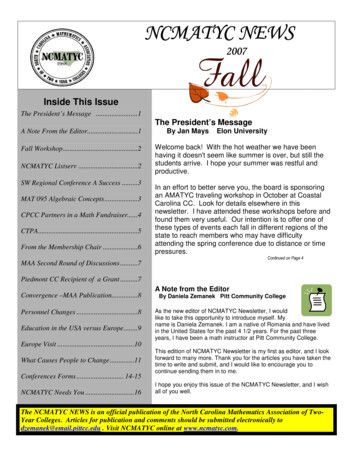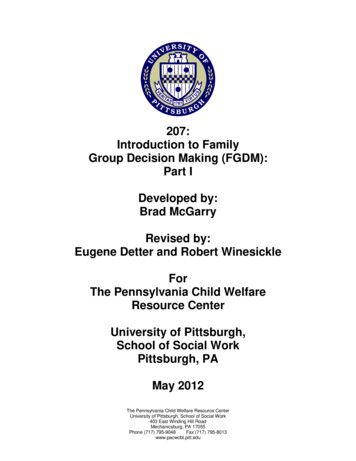
Transcription
207:Introduction to FamilyGroup Decision Making (FGDM):Part IDeveloped by:Brad McGarryRevised by:Eugene Detter and Robert WinesickleForThe Pennsylvania Child WelfareResource CenterUniversity of Pittsburgh,School of Social WorkPittsburgh, PAMay 2012The Pennsylvania Child Welfare Resource CenterUniversity of Pittsburgh, School of Social Work403 East Winding Hill RoadMechanicsburg, PA 17055Phone (717) 795-9048Fax (717) 795-8013www.pacwcbt.pitt.edu
Copyright 2012, The University of PittsburghThis material is copyrighted by The University of Pittsburgh. It may be used freely fortraining and other educational purposes by public child welfare agencies and other notfor-profit child welfare agencies that properly attribute all material use to The Universityof Pittsburgh. No sale, use for training for fees or any other commercial use of thismaterial in whole or in part is permitted without the express written permission of ThePennsylvania Child Welfare Resource Center of the School of Social Work at TheUniversity of Pittsburgh. Please contact the Resource Center at (717) 795-9048 forfurther information or permissions.
AcknowledgementsJim BieseckerStephen BishopSusan BlackburnHoward DarbyMelissa EmlingJune FisherPatricia GadsenTrish HackmanAndrea LargentRenee LongMarc MaddyMike McClureBrad McGarryKathy MooreSandy MooreBarb NissleyPatti NossLaura RushHelen SpenceJo SternerStephanie StrayerKatie StrausDoug WaegelRodney WagnerLisa WalkerRandi Yeager-MarkerFamily Design ResourcesJuvenile Court Judges CommissionJuvenile Court Judges CommissionPhiladelphia Department of Human ServicesIndependent Trainer and ConsultantIndependent TrainerLife Esteem Professional and Personal Training andConsulting ServicesIndependent Trainer and ConsultantIndependent TrainerBerks County Children and Youth ServicesJusticeWorks YouthcareWashington County Children and Youth ServicesUnion City Family Support CenterIndependent TrainerAdministrative Office of Pennsylvania CourtsPennsylvania Coalition Against Domestic ViolenceIt Takes A VillageCommunity Service FoundationDauphin County Department of Human ServicesPennsylvania Coalition Against Domestic ViolenceAdministrative Office of Pennsylvania CourtsBucks County Children and Youth Social ServicesAgencyChester County Children and Youth ServicesYork County Youth Development CenterA Second Chance Inc.Dauphin Department of Human Services
Agenda for One-Day Workshop on207: Introduction to Family Group Decision Making (FGDM): Part IDay OneEstimated TimeContentPage20 minutesSection I:Welcome and Introductions11 hourSection II:What is Family Group DecisionMaking?635 minutesSection III:Family Group Decision MakingValues, Beliefs, and Benefits113 hours, 30 minutesSection IV:The Family Group DecisionMaking Process1435 minutesSection V:Wrap-Up and Evaluation34
207: Introduction to Family Group Decision Making (FGDM): Part ISection I: Welcome and IntroductionsEstimated Length of Time:20 minutesLearning Objectives:Participants will be able to: Identify the overall learning points that will be discussed during the training.Method of Presentation:Lecture, Individual and Group Discussion, and ActivityMaterials Needed: Dried Beans and Container Flip Chart Pads Flip Chart Stands Laptop LCD Projector/Screen Markers Masking Tape Name Tents Trainer Prepared Flip Chart: Parking Lot Trainer Prepared Flip Chart: What’s In It For Me? Appendix #1: Key Point Handout #1: Idea Catcher Handout #2: Agenda Handout #3: Learning Objectives/Competency Poster #1: Stacking for Success Poster #2: Family Group Decision Making Poster #3: Jim Nice Quote 1 Poster #4: Jim Nice Quote 2 Poster #5: The Four Stages of FGDM Poster #6: The FGDM Meeting Guidelines PowerPoint Slide #1: Introduction to Family Group Decision Making(FGDM): Part I PowerPoint Slide #2: Agenda PowerPoint Slide #3: Learning Objectives/Competency PowerPoint Slide #4: Introductory Exercise Table Resource #1: Guidelines for Family Group Decision Making in ChildWelfare Table Resource #2: Pennsylvania Family Group Decision Making Toolkit: AResource to Guide and Support Best Practice ImplementationThe Pennsylvania Child Welfare Resource Center207: Introduction to Family Group Decision Making (FGDM): Part IPage 1 of 38
Section I: Welcome and IntroductionsPre-training Considerations:The training room should be set up to accommodate the specific size of the audience toensure that individuals can have optimal viewing throughout the training. In advance ofthe training, you should prepare flip charts, which you will find on section cover pages(labeled as “Trainer Prepared Flip Charts” – e.g., the What’s In It for Me and ParkingLot). In addition to preparing flip charts, you may need to perform other work prior to thetraining that assists your training efforts. Please read the entire curriculum before yourdelivery date to allow you time to prepare for delivery. Before participants enter theroom, the Parking Lot and What’s In It for Me? flip charts should be posted.Ensure that you reference the What’s In It for Me? throughout the training, making sureto tie in when you meet a participant’s need and/or refer them to an appropriateresource that will assist in meeting that need.Ahead of time, ensure that you place a container next to the participant sign-in sheet,which should be placed somewhere near the training room entrance. In the container,place the beans that were sent in your training box. Participants will need them for anactivity in the first section of the training.Participants should have received pre-work before the training. As part of the pre-work,they were asked to become familiar with their agency’s policies and proceduressurrounding Family Group Decision Making (FGDM). In addition, they were asked tobring to the training a copy of their agency’s policies surrounding FGDM as well as theiragency’s FGDM referral form.Prior to participants’ arrival, PowerPoint Slide #1 (Introduction to Family GroupDecision Making (FGDM): Part I) should be displayed.Trainer Note: The two trainer resources referenced below should be available in all ofthe Resource Center training rooms. Please confirm with your ResourceCenter Specialist before your training that the resources are available.On the resource table, ensure that one copy of Table Resource #1 (Guidelines forFamily Group Decision Making in Child Welfare) and Table Resource #2(Pennsylvania Family Group Decision Making Toolkit: A Resource to Guide andSupport Best Practice Implementation) are available. These items are not specificallyreferenced in the curriculum. They are offered only as resources for participants to viewand for you to tie to the training day where you see fit.Hang Poster #1 (Stacking for Success), Poster #2 (Family Group DecisionMaking ), Poster #3 (Jim Nice Quote 1), Poster #4 (Jim Nice Quote 2), Poster #5(The Four Stages of FGDM), and Poster #6 (The FGDM Meeting Guidelines) prior toThe Pennsylvania Child Welfare Resource Center207: Introduction to Family Group Decision Making (FGDM): Part IPage 2 of 38
the start of the training day and refer to them where applicable. Hang Poster #6 (TheFGDM Meeting Guidelines) beside the Resource Center training guidelines.Ahead of time, post the individual pages of Appendix #1 (Key Point) in differentlocations around the room. In selecting locations, make sure to consider the fact thatparticipants will be asked to stand under the key point that is most compelling to themduring an activity in Section III: Family Group Decision Making Values and Beliefs,Make sure that enough standing room is available.If you feel comfortable doing so, it may be beneficial to draw parallels between whatparticipants experience during the training day and a real Family Group DecisionMaking meeting. Several parallels are offered below. Feel free to make any additionalparallels throughout the training. Your role as a trainer is similar to that of a facilitator. Your job is simply tofacilitate the learning process. The FGDM facilitator’s role is to facilitate thedecision making process. You have likely not met any of the participants, similarto a FGDM facilitator, who in most cases has not met any of the FGDM meetingattendees prior to the meeting. The individual that coordinated participants’ attendance at this training is similarto the FGDM coordinator. The concept of guidelines established for the training and the concept ofguidelines being established at the FGDM meeting (e.g., the Resource Centertraining guidelines poster and the guidelines offered on Poster #6 (The FGDMMeeting Guidelines)).It will be necessary to prepare a flip chart titled, “Good Purpose Statement.” Examples,which will be provided once more in Section V, now follow: Develop a plan to support [insert parent/caregiver name here] while alwaysensuring that [insert child/ youth name here] is safely with [his/her] family.(regarding staying in own home) Develop a plan so that [insert child/ youth name here] can safely return home.(regarding returning to own home) Develop a plan for [insert child/ youth name here] to be safe and in a structuredenvironment so that she can graduate school. (generic could apply to in-home,out-of-home, etc.) To celebrate the youth and develop a plan so that the youth can make asuccessful transition to adulthood. (regarding transitions)It is important to keep in mind that there are likely participants in the training who do notwork for a public Children and Youth agency. You will likely have participants who workin areas such as Juvenile Probation, Mental Health, Education, Drug and Alcohol, FaithBased Community, as well as parents and community members. It will be necessary toThe Pennsylvania Child Welfare Resource Center207: Introduction to Family Group Decision Making (FGDM): Part IPage 3 of 38
make connections for these participants. Also, remember that not all participants will bewell versed in the jargon and acronyms that are used by child welfare professionals. Itwill be important to speak in a language that everyone understands and to take time toclarify certain points and acronyms for these individuals when unfamiliar language isused, not only by you as a trainer, but also by other participants in the training.Step 1: Trainer Introduction and Resource Center Guideline Review(5 minutes)As participants enter the room, ask each participant to sign in and take 10 beans from acontainer that you placed next to the sign in sheet.Introduce yourself, providing a brief explanation of your background and experienceswith Family Group Decision Making (FGDM), and welcome participants.Review the guidelines for the Pennsylvania Child Welfare Resource Center (i.e., The15-Minute Rule (which should already be posted in your training room), sign in sheet,and evaluation).Step 2: Review of Agenda, Competency, and Learning Objectives(5 minutes)Note that Handout #1 (Idea Catcher), has been provided for participants to recordthoughts or ideas that they gain from the training that will benefit the implementation ofFGDM in their community.Display and review PowerPoint Slide #2 (Agenda) and PowerPoint Slide #3(Learning Objectives/Competency). In addition, refer participants to Handout #2(Agenda) and Handout #3 (Learning Objectives/Competency) to ensure participantunderstanding. Also, briefly discuss the rationale and purpose for the training. Answerany questions, as necessary, and inform participants if their questions relate to a topicthat will not be discussed during the training. Any questions that will not be answeredthroughout the course of the training should be posted on the Parking Lot. Note that youwill be available during the two breaks to explore further those questions or to provideadditional resource information.Step 3: Introductory Exercise/Participant Introductions and “What’s In It For Me?”(10 minutes)Using PowerPoint Slide #4 (Introductory Exercise) as a guide for participants,engage the participants in an exercise that has them get to know each other andidentifies who and what service entities are represented at the training. Ask participantsto pair up and interview each other asking/sharing the following: Name;Occupation;The Pennsylvania Child Welfare Resource Center207: Introduction to Family Group Decision Making (FGDM): Part IPage 4 of 38
Agency;One interesting fact about them or their family;Whether they referred family to/attended/coordinated/facilitated a Family GroupDecision Making meeting; and,What they want to get from this training (What’s In It for Me?).Give participants about 10 minutes to complete this portion of the exercise and then askthem (as partner pairs) to introduce one another. As participants offer their information,use it as a guide to gauge the level of participant knowledge in the room. Adjust deliveryas is necessary. In addition, as participants offer their What’s In It for Me? information,capture that information on flip chart paper. When finished, move the paper to an areawhere you can readily refer to and access it. It should take 20 minutes or less tocomplete the entire exercise.Trainer Note: If the group is too large for this exercise, you may want to haveparticipants raise their hands and share if they are with Children andYouth, Juvenile Probation, Mental Health, Education, Drug and Alcohol,Faith-Based Community, Parents, Community Members, or any otherarea you can identify.Tell participants that, as they may have recognized, if there are participants in the roomfrom a variety of systems, FGDM involves numerous systems when it is implemented(e.g., child welfare, probation, drug and alcohol, mental health, school districts, etc.).This practice can be utilized in numerous settings and systems (e.g., working withissues for families, children, church, and elderly). Since many children and families areinvolved with more than one system, FGDM offers the opportunity for the family to haveone plan and be supported by all systems in accomplishing the plan. Participants shouldunderstand that to implement FGDM successfully, many of these systems should berepresented from the beginning. A great deal of energy has to be put into educating theseparate systems and bringing them together to have a voice in implementing FGDM. Itis essential that this work is completed during the initial phases of implementation;otherwise, it will be difficult to educate these systems and have them participateeffectively in the practice once it is being implemented.The Pennsylvania Child Welfare Resource Center207: Introduction to Family Group Decision Making (FGDM): Part IPage 5 of 38
207: Introduction to Family Group Decision Making (FGDM): Part ISection II: What is Family Group Decision Making?Estimated Length of Time:1 hourLearning Objectives:Participants will be able to: Identify the origins of Family Group Decision Making (FGDM) and its currentusage in Pennsylvania. Identify the unique features of FGDM compared to traditional social workpractice.Method of Presentation:Lecture, Large Group Discussion, Small Group ActivityMaterial Needed: DVD Player/TV External Speakers (for Laptop) Flip Chart Pads Flip Chart Stands Laptop LCD Projector/Screen Markers Masking Tape Trainer Prepared Flip Chart: Parking Lot Trainer Prepared Flip Chart: What’s In It for Me? DVD #1: Pathways to Permanence Handout #4: History of Family Group Decision Making Handout #5: The Practice of FGDM vs. Traditional Practice Handout #6: Unique Features of FGDM PowerPoint Slides #5-6: Bean Exercise Questions PowerPoint Slide #7: History of Family Group Decision Making PowerPoint Slide #8: FGDM in Pennsylvania: December 2010 PowerPoint Slides #9-10: The Practice of FGDM vs. Traditional Practice PowerPoint Slides #11-13: Unique Features of FGDM Poster #2: Family Group Decision Making Poster #3: Jim Nice Quote 1 Poster #4: Jim Nice Quote 2 Poster #5: The Four Stages of FGDMThe Pennsylvania Child Welfare Resource Center207: Introduction to Family Group Decision Making (FGDM): Part IPage 6 of 38
Section II: What is Family Group Decision Making?Trainer Note: Prior to delivery of this section, ensure that you hung Poster #2 (FamilyGroup Decision Making ), Poster #3 (Jim Nice Quote 1), Poster #4(Jim Nice Quote 2), and Poster #5 (The Four Stages of FGDM).PowerPoint Slides #5-6 (Bean Exercise Questions) have beendeveloped so that you will need to press the spacebar, down arrow key,right arrow key, or left click the mouse to display each scenario. Thescenarios will not all be visible upon the initial display of thesePowerPoint slides.Step 1: Bean Exercise and Introduction to Widening the Circle(15 minutes)Ask participants to locate the beans they received when they entered the room. Askthem to place all beans in their right hand. Show PowerPoint Slides #5-6 (BeanExercise Questions). Read the first statement on the Bean Exercise QuestionsPowerPoint slide. Tell participants that, if they or someone in their family (extended orimmediate) experienced the circumstance or situation just offered, they are to transferone bean from their right hand to their left hand. Continue reading each statement,ensuring that participants have time to consider whether the statement applies tothem/their family and asking participants to switch one bean from their right hand totheir left hand if they or their family experienced the circumstance or situation offered.By the end of the exercise, very few individuals will have all their beans in their righthand.Ask a few participants to share how their family coped with one of the situationsrepresented by the beans in their left hand. It is not necessary that participants disclosewhich family member they are discussing. Share that all of these questions are waysthat a family could get involved with child welfare services. Ask participants what theybelieve to be the purpose of this exercise. Two possible purposes follow: To assist participants in understanding that any family can become involved in“the system,” thereby creating a sense of commonality between participants andthe families with whom they work; and To have participants realize that the families who go through the Family GroupDecision Making (FGDM) process are often very similar to their own families.Ask participants, by show of hands, whose families responded to the identified issuesby pulling together to support one another. If anyone raises their hand, ask them to offerif they believe this approach would be beneficial as well as why. At this time, tie in theconcept of Widening the Circle in relation to ensuring that a family must have the propersupport network in place to help them through difficult times . Often times, the familieswith whom we work do not have the supports in place that they need to successfullydeal with circumstances in their lives. Explain that FGDM efforts work toward WideningThe Pennsylvania Child Welfare Resource Center207: Introduction to Family Group Decision Making (FGDM): Part IPage 7 of 38
the Circle and identifying much more than just the nuclear family as participants. WhenWidening the Circle, the family decides who will participate and who they want involvedin helping create their plan – except for the child welfare professional, who must bepresent at the meeting and must accept the plan. When Widening the Circle occurs, thefamily is empowered to make the decisions for its members.Trainer Note: You may want to use a drawing on flip chart paper to illustrate thewidening of the circle (i.e., typical families involved in the children andyouth system before and after Widening the Circle).Step 2: Review of Jim Nice Quotes(5 minutes)Present that FGDM is an alternative method for developing the Family Service Plan.The best way to describe FGDM is with the quotes on Poster #2 (Family GroupDecision Making ), Poster #3 (Jim Nice Quote 1), and Poster #4 (Jim Nice Quote2). Ask a volunteer to read the quote on Poster #2 (Family Group DecisionMaking ). Explain that the first quote differs from traditional practice in many ways.One way in which it differs is that, in traditional practice, families are often expected toattend agency meetings where service providers recommend a level or type of service.The family is then expected to follow all agency recommendations. Ask a volunteer toread Poster #3 (Jim Nice Quote 1). When using FGDM, this quote emphasizes thefamily’s ownership of the meeting as well as the honor it truly is for a family to choose toinvite a professional to their family meeting. Share that FGDM encourages familyempowerment and family involvement including extended family, friends, neighbors,community supports, etc. FGDM respectfully encourages the family to come together asthe best people to make short and long-term decisions for its members. Share that oneof the principles from Kinpower in New Zealand is “Your own family as your best guide.”Invite participants to think about their own family, struggles and life experiences. Directparticipants to Poster #4 (Jim Nice Quote 2) and read the poster aloud. Family GroupDecision Making speaks to the simplistic and innate way families come together to takecare of their own.Step 3: History of FGDM(5 minutes)Provide a brief history of FGDM using PowerPoint Slide #7 (History of Family GroupDecision Making) and Handout #4 (History of Family Group Decision Making).Explain that Family Group Decision Making first became known internationally when itbecame law in New Zealand, with the 1989 Children, Young Persons, and their FamiliesAct. This act established federal legislation that made it mandatory for all serious childwelfare and juvenile justice cases to participate in the FGDM process. The indigenouspeople of New Zealand, the Maoris, played a central role in this practice, when theypresented “PUAO-TE-ATA-TU” (DAY BREAK) to the Department of Social Welfare. Inthis report, they made 13 recommendations that were the foundation of the Maoriproject, New Zealand’s first efforts at Family Group Conferencing. This practice spreadThe Pennsylvania Child Welfare Resource Center207: Introduction to Family Group Decision Making (FGDM): Part IPage 8 of 38
from New Zealand to Australia, Great Britain, Ireland, Europe, Canada, and the UnitedStates. Around the same time, Larry Graber, a manager in Oregon’s Children Services,created the Family Unity Model and with the help of Jim Nice and other associatesintroduced FGDM in Oregon and other states. Since the practice was introduced in theUnited States approximately 20 years ago, it has gradually grown and is currently beingimplemented in over 35 states and hundreds of counties across the United States(American Humane Association, 2010: Conference Announcement). DisplayPowerPoint Slide #8 (FGDM in Pennsylvania: December 2010) and informparticipants that this is a map, which identifies the counties in Pennsylvania currentlyimplementing the FGDM process. After giving participants a moment to view thePowerPoint slide, tell them that you will post it during break for those interested in takinga closer look.Trainer Note: Remember to display PowerPoint Slide #8 (FGDM in Pennsylvania:December 2010) during the next break to give participants anopportunity to review it.Step 4: Introduction to the Four Stages of FGDM and Comparison of FGDM andTraditional Practice(20 minutes)Using Poster #5 (The Four Stages of FGDM), explain that there are four stages to theFGDM process.Break participants into small groups of four to five individuals and ask them to comparetheir understanding of FGDM to their current/traditional case practice. What is different?What is the same? Ask each group to record their responses on flip chart paper.When the small groups have completed their discussion, facilitate a large groupdiscussion on traditional practice. Below are likely responses: Worker develops the plan in the office with little input from the family; and, Worker only has one or two family members involved in developing the plan,etc.Record key concepts on flip chart paper and gain group consensus on what traditionalpractice looks like. After this discussion, describe the FGDM planning process usingPowerPoint Slides #9-10 (The Practice of FGDM vs. Traditional Practice) andHandout #5 (The Practice of FGDM vs. Traditional Practice).Display PowerPoint Slides #11-13 (Unique Features of FGDM) and distributeHandout #6 (Unique Features of FGDM) and highlight the unique features that makeFGDM different. Offer the fact that, beneficial to the agency and related professionals,the family’s issues or problems typically create the content and context of the meeting.In FGDM, the concentration is first on the strengths and then on the concerns that canbe addressed using those identified strengths of the family.The Pennsylvania Child Welfare Resource Center207: Introduction to Family Group Decision Making (FGDM): Part IPage 9 of 38
Paul Sivak, (University of California, Stanislaus) first presented that FGDM istransformational because FGDM requires individuals and entire systems to change theirthinking and to change how they do business. FGDM challenges some contemporaryideas as well as how certain agencies conduct business.Traditionally, human services agencies see their role as one in which they direct andeducate misguided and uninformed families. FGDM views the family as the bestresource for themselves with formal supports acting as a small piece of the largerpicture. FGDM challenges communities to build partnerships and create bonds thatpreviously might not have existed. It takes a lot to change an entire system’s way ofthinking, but that is just what happens when FGDM is implemented well.In addition to the previously shared material, FGDM offers the unique concept ofspeaking in the language of concerns. It is important that participants understand thatspeaking in the language of concerns allows people to talk about how they feel in anappropriate manner. The language of concerns is also usually easier to hear fromsomeone, including other family members (e.g., “I am concerned about ” vs. “Yourproblem is ”).Step 5: Pathways to Permanence Video(15 minutes)Trainer Note: As different DVD players may offer different timing, you will need to cuethe video before the training to be ready to play it in this section. Theportion of the DVD #1: Pathways to Permanence at which to start(roughly 5:23) reveals a young woman with red hair stating, “Whileworking on this film, we visited some communities that are using a veryprogressive idea to help families keep their children from bouncingaround in foster care.” The portion at which to end viewing (roughly11:28) reveals a clip, set to music, of a family finishing their conference.Show the DVD #1: Pathways to Permanence (5:23 to 11:28). This portion of the videooffers information about promising practices in family engagement – one of which isFamily Group Decision Making. After viewing the video, ask participants, as a largegroup, to offer some of the unique features that they observed in the video compared tothe traditional approach to practice.Trainer Note: You may choose to display PowerPoint Slide #8 (FGDM inPennsylvania: December 2010) prior to the morning break anddescribe the map to participants, telling them that they are welcome toview the map during their break. This is likely when the morning breakwill occur, however this PowerPoint slide may be displayed regardless ofthe time of the break.The Pennsylvania Child Welfare Resource Center207: Introduction to Family Group Decision Making (FGDM): Part IPage 10 of 38
207: Introduction to Family Group Decision Making (FGDM): Part ISection III: Family Group Decision Making Values, Beliefs, andBenefitsEstimated Length of Time:35 minutesLearning Objectives:Participants will be able to: Identify the values and beliefs of FGDM. Identify the need for and importance of a paradigm shift. Identify the benefits of FGDM to families, communities, and workers.Method of Presentation:Lecture, Large Group DiscussionMaterial Needed: Flip Chart Pads Flip Chart Stands Laptop LCD Projector/Screen Markers Masking Tape Trainer Prepared Flip Chart: Parking Lot Trainer Prepared Flip Chart: What’s In It for Me? Appendix #1: Key Point Handout #7: The Values and Beliefs of FGDM Handout #8: Benefits of FGDM PowerPoint Slides #14-15: The Values and Beliefs of FGDM PowerPoint Slides #16-17: Benefits of FGDMThe Pennsylvania Child Welfare Resource Center207: Introduction to Family Group Decision Making (FGDM): Part IPage 11 of 38
Section III: Family Group Decision Making Values, Beliefs, andBenefitsStep 1: Key Points Activity(15 minutes)Trainer Note: Ensure that Appendix #1 (Key Point) is still posted around the room, asit will be needed to facilitate the next activity.You will need to be mindful of time as the group moves through thefollowing activity.Review the Appendix #1 (Key Point) posted around the room. Review each key point,asking volunteers to read each key point. Explain that these five key points were chosenbecause they represent the heart of FGDM. When the key points have been reviewed,ask each participant to stand and move to the key point that they find most compelling.As participants choose and stand by a key point, move to one by which few stand or noone stands. Give the participants about five minutes to explain the significance of theirchosen key point to each other in their small groups. Then, as a large group, move frompoint to point asking the participants to explain the significance of that principle. Thisactivity recognizes that FGDM values and beliefs are universal and participants sharehow they, as individuals, relate to their values and beliefs. It is very rare that anindividual does not identify with any of the FGDM convictions. If no one relates to any ofthe points, you may see individuals remaining at their table. If this happens, you cansay, “It gives me an opportunity to demonstrate acce
Trainer Note: The two trainer resources referenced below should be available in all of the Resource Center training rooms. Please confirm with your Resource Center Specialist before your training that the resources are available. On the resource table, ensure that one c
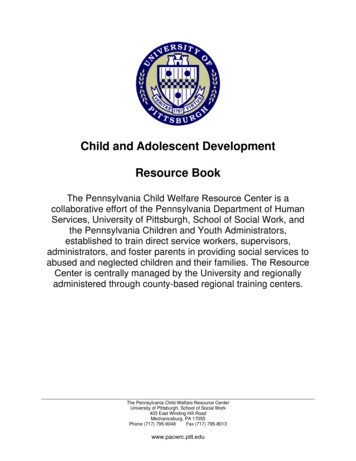

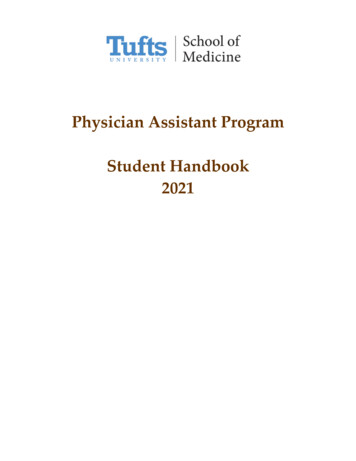
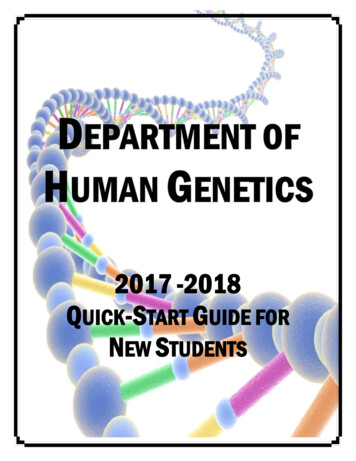
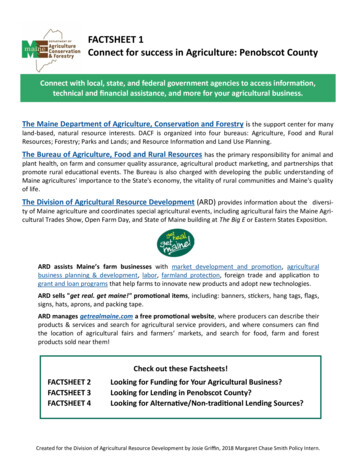
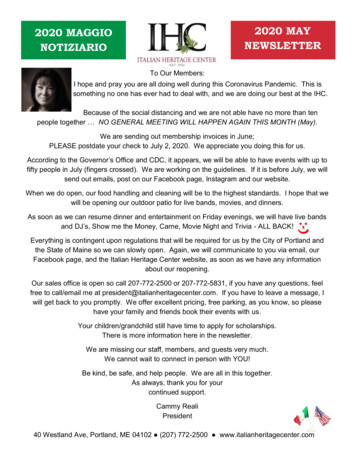
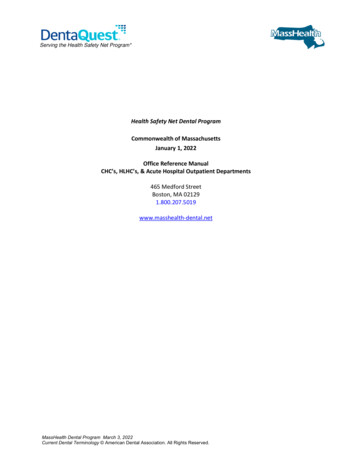
![WELCOME 1 [acribbons.weebly ]](/img/32/roe-full-book-2019-4-1-19.jpg)
